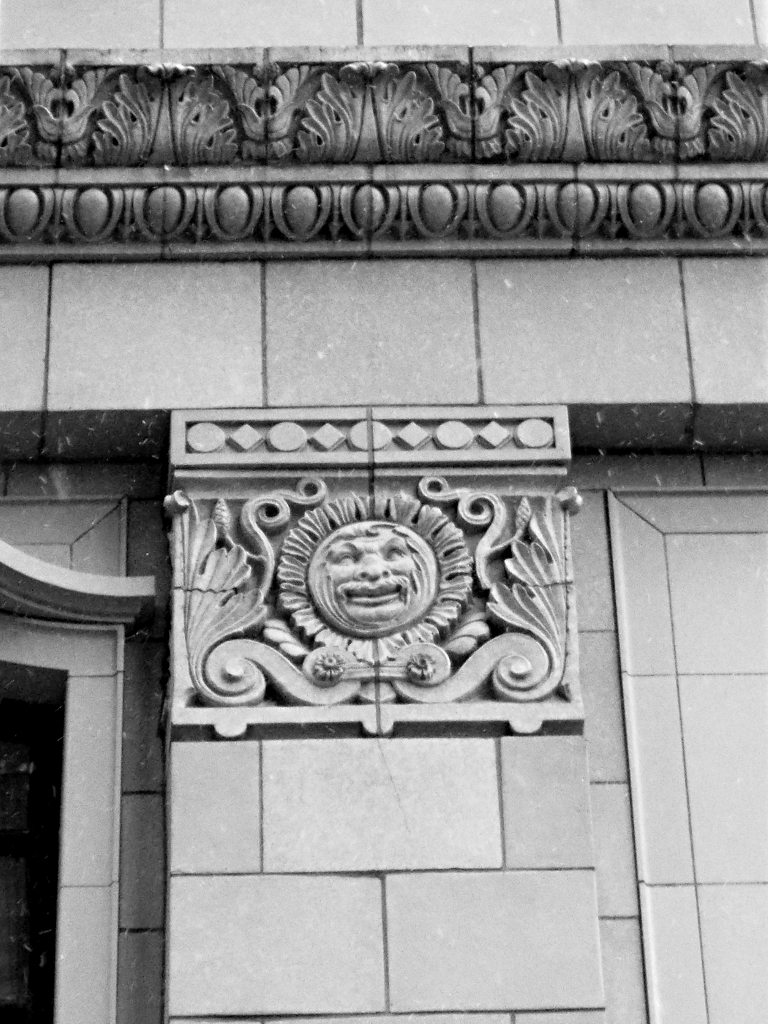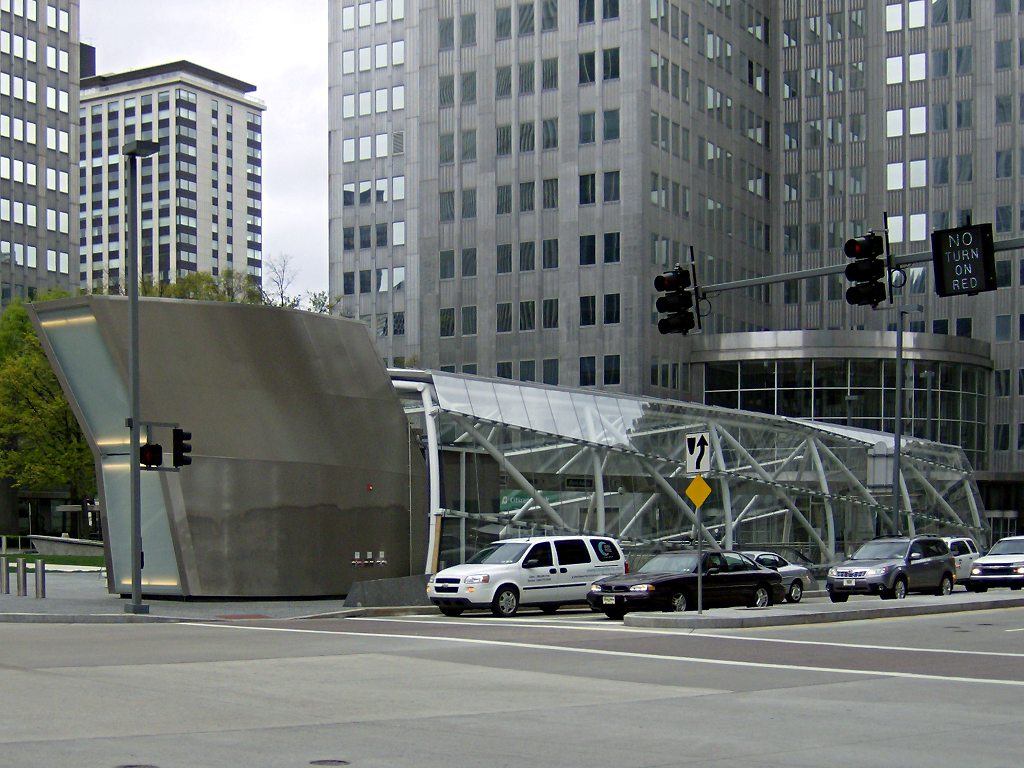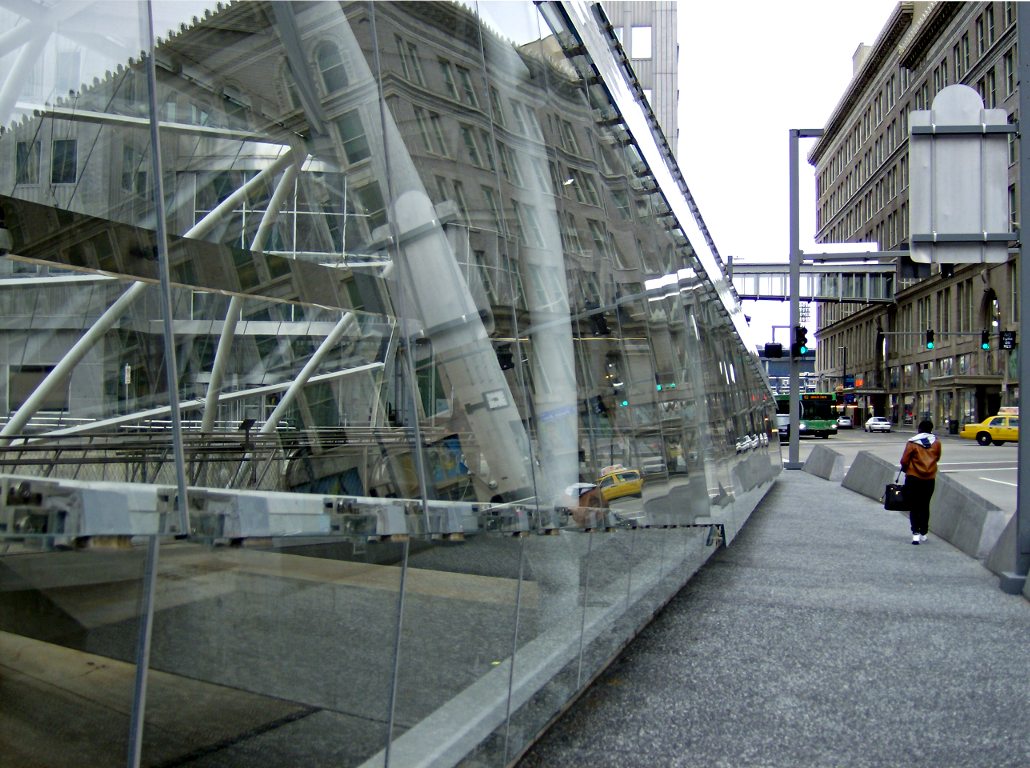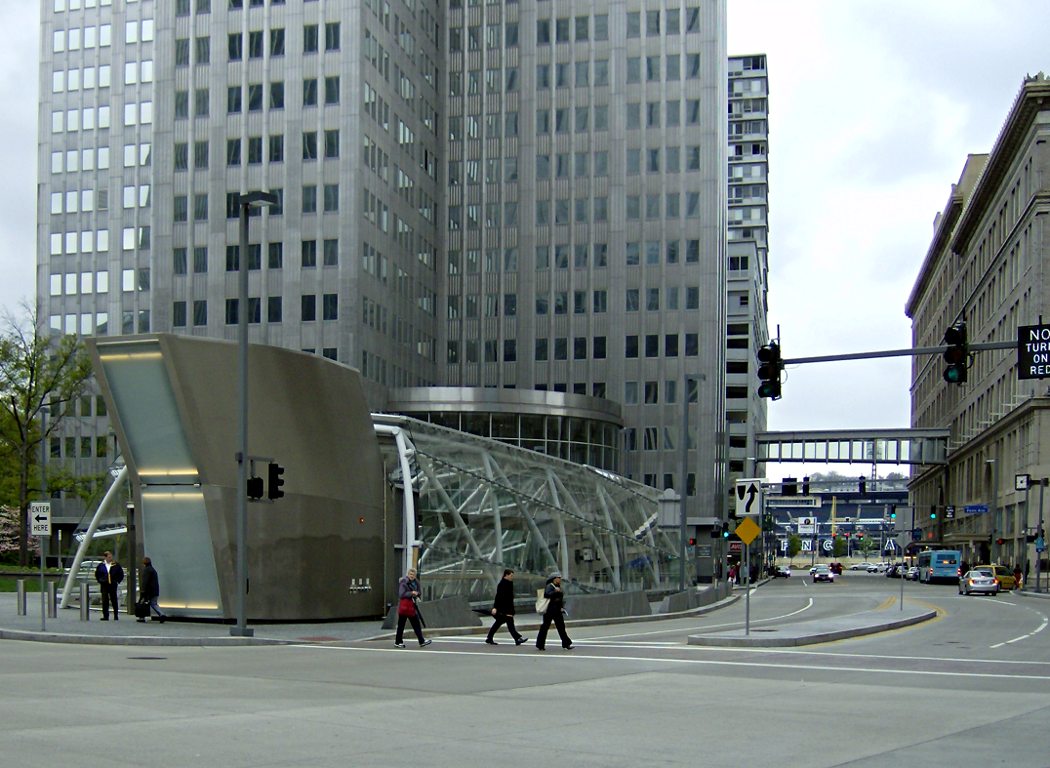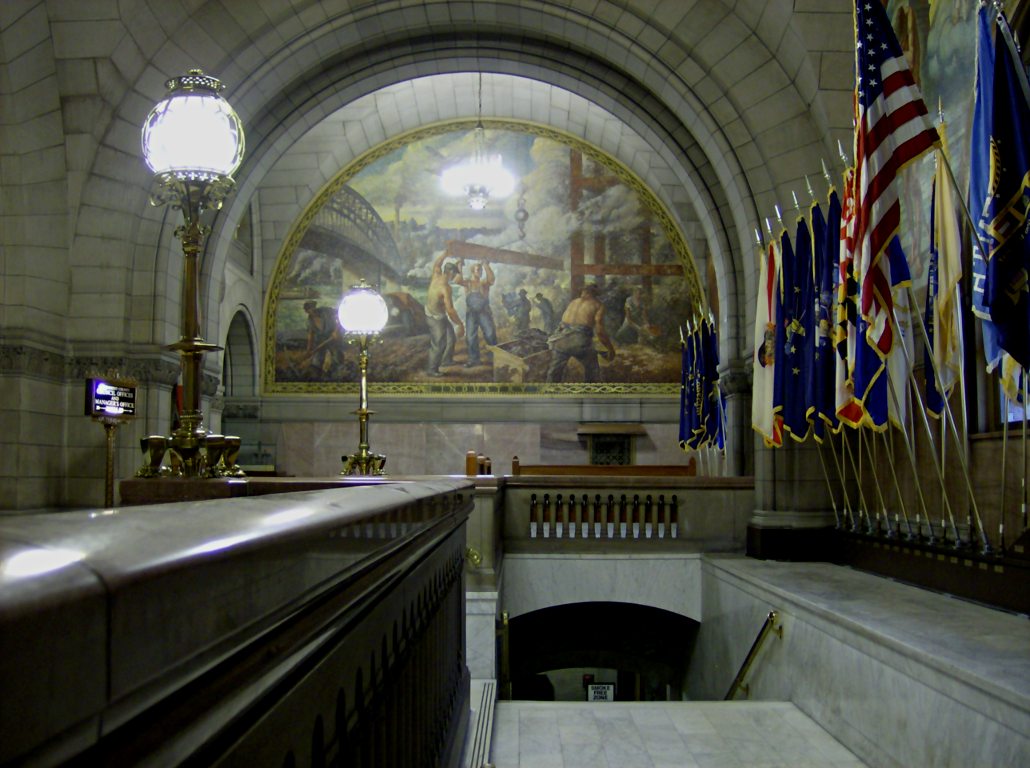You need a sharp eye, and a long lens, to pick out some of the details on Heinz Hall from ground level. At first the exterior appears to be rather staid, but it rewards close examination with some charmingly whimsical decorations. (The white spots visible in these pictures are snowflakes.)
-
Heinz Hall Details
-
Eye Benches at Katz Plaza
-
Lobby of the Benedum Center
-
Cruising on the Monongahela
-
Diamond Building
The Diamond Biulding, at Fifth and Liberty Avenues, is a curiously shaped irregular pentagon, one of the many buildings forced into odd shapes by the colliding grids along Liberty Avenue. Except for the shape, it’s a fairly standard beaux-arts tower, with base, shaft, and cap, and an exuberant bronze cornice at the very top. The building was designed by MacClure and Spahr, a Pittsburgh firm that gave us several other distinguished buildings, including the Union National Bank building on Fourth Avenue.
-
Liberty Avenue
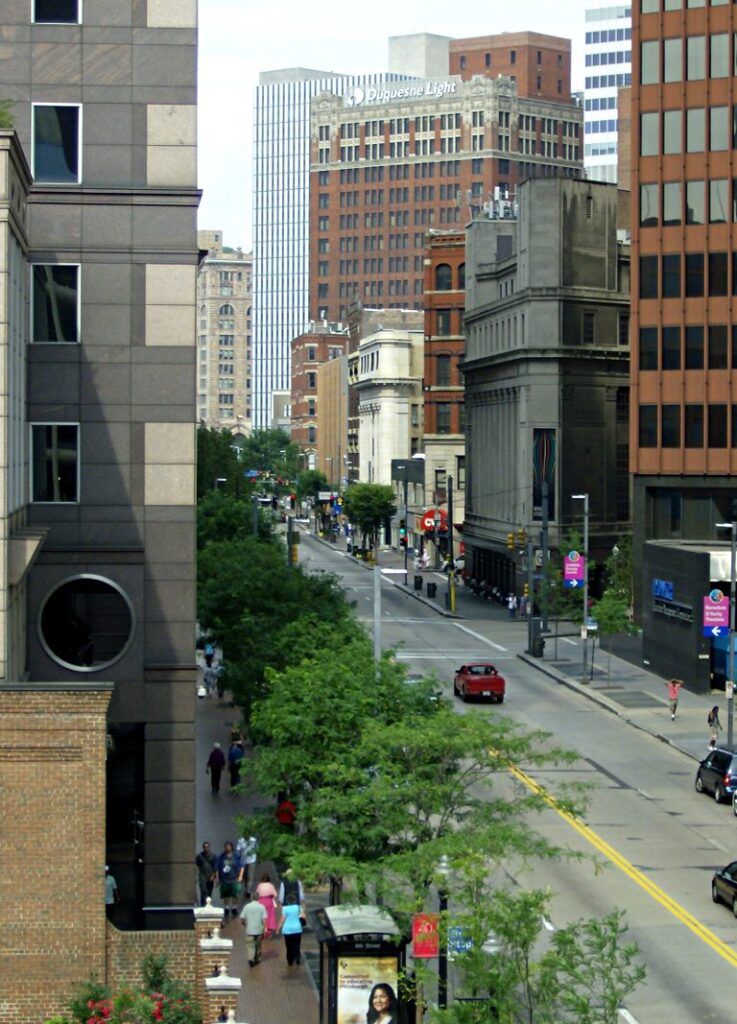
Downtown Pittsburgh is laid out in two colliding grids, and Liberty Avenue is where they collide. On the right-hand side of Liberty Avenue downtown (as we look at it here), the streets form baffling acute and obtuse angles that force buildings into all sorts of curious shapes. This is the view eastward from Sixth Street.
-
Gateway Station, Above the Ground
The part of the new Gateway subway station that projects above the ground is a weirdly surrealistic pile of glass that will probably look “futuristic” far into the future, in that wonderfully hokey way that old Flash Gordon serials still look “futuristic” today. This is meant as a compliment. Most trends in architecture look terribly dated a few years later, but the most outrageous Art Deco or Space-Age creations never look stale, even when we can hardly believe that they ever actually got built. The multiple angles of the glass reflect the surrounding buildings in a wild cacophony of fractured images. The architects have succeeded in creating a station that Pittsburghers will want to show off to visitors, and that we will enjoy using ourselves.
-
New Subway: Gateway
The new subway line to the North Side is rolling, and the stations are beautiful and functional. We begin with the wonderfully airy new Gateway station, which is flooded with natural light from the glassy superstructure above.
The mural “Pittsburgh Recollections” by Romare Bearden has been removed from the old Gateway Center station and reinstalled here at Gateway.
The old Gateway Center still survives as a ghost station; watch carefully for it between Wood Street and Gateway. Its name also survives in a curious way; it sounds as though the original recorded station announcement has been clumsily edited. As you come up on the new Gateway station, you hear a voice saying, “Approaching Gateway Ce—.” [UPDATE: This voice announcement has since been re-recorded without the ghostly sibilant.]
-
Downtown from the North Side
-
“Industry” Mural in the Allegheny County Courthouse


